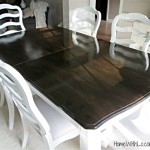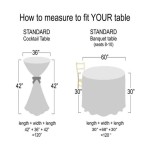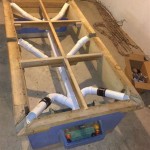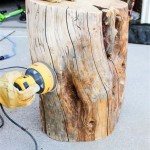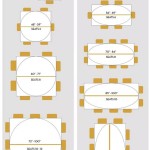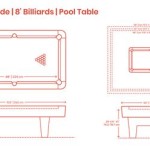How To Build A Coffee Table With A Glass Top
A coffee table is a central piece of furniture in many living rooms, serving both a functional and aesthetic purpose. While numerous commercially available options exist, constructing a custom coffee table allows for personalized design, tailored dimensions, and the satisfaction of creating a unique piece. Integrating a glass top adds a touch of modern sophistication and allows the underlying structure to be showcased. This article outlines the process of building a coffee table with a glass top, providing a detailed guide for achieving a professional-looking result.
Before embarking on the construction, careful planning and preparation are crucial. This includes determining the desired dimensions of the coffee table, selecting the appropriate materials, and gathering the necessary tools. Failure to adequately plan can lead to complications during the building process and a less satisfactory final product.
The design of the coffee table will dictate the materials required. Common choices for the base include solid wood, plywood, metal, or a combination thereof. Solid wood offers durability and a classic aesthetic, while plywood provides a cost-effective and stable alternative, particularly for larger surfaces. Metal, such as steel or wrought iron, can be incorporated for a more industrial or modern design. The glass top should be tempered for safety and should be of an appropriate thickness to support expected loads. Thicker glass is naturally stronger, but it impacts the cost and ease of handling.
Essential tools for this project include a measuring tape, pencil, saw (circular saw, miter saw, or hand saw), drill, screwdriver, sander, wood glue, clamps, and safety glasses. Depending on the chosen materials, additional tools such as a welding machine (for metal frames) or a router (for decorative edges) may be required.
Safety is paramount throughout the entire construction process. Always wear safety glasses to protect your eyes from flying debris. Use appropriate personal protective equipment (PPE) when operating power tools, such as hearing protection and dust masks. Ensure the work area is well-ventilated, especially when working with adhesives or finishes.
Planning and Design
The first step is to determine the desired dimensions of the coffee table. Consider the size of the living room, the existing furniture, and the intended use of the table. A common height for coffee tables ranges from 16 to 18 inches, but this can be adjusted to suit personal preferences and the height of the sofa. The length and width should be proportionate to the space and the surrounding furniture.
Once the dimensions are finalized, create a detailed sketch or blueprint of the coffee table. This should include all dimensions, material specifications, and joinery details. The sketch will serve as a visual guide throughout the construction process and help prevent errors.
Determine the method of attaching the glass top to the base. Options include using rubber bumpers or silicone adhesive. Rubber bumpers provide a non-slip surface and protect the glass from direct contact with the frame. Silicone adhesive offers a more permanent bond but requires careful application to avoid unsightly residue.
Consider the aesthetic style of the coffee table. Do you prefer a modern, minimalist design, or a more rustic, traditional look? The design should complement the existing decor of the living room. The choice of materials, finishes, and joinery techniques will all contribute to the overall aesthetic.
When selecting the glass top, consider both the size and the thickness. The size should be slightly larger than the frame to allow for an overhang. The thickness will depend on the size and the expected load. A minimum thickness of ¼ inch is generally recommended, but thicker glass may be necessary for larger tables or those that will support heavy objects.
Base Construction
The construction of the base will depend on the chosen design and materials. This section will outline the general steps for building a wooden base, which is a common and versatile option.
Begin by cutting the wood pieces to the required dimensions, as specified in the blueprint. Use a saw to make accurate and clean cuts. If using plywood, consider using a saw blade designed for plywood to minimize splintering.
Assemble the frame of the coffee table using wood glue and screws. Ensure the frame is square and level before securing the joints. Use clamps to hold the pieces together while the glue dries. Pilot holes should be drilled before inserting screws to prevent splitting the wood.
Add any additional structural supports, such as aprons or stretchers, to increase the stability and rigidity of the frame. These supports should be securely attached to the frame using wood glue and screws.
Sand all surfaces of the base to create a smooth and even finish. Start with a coarse grit sandpaper to remove any imperfections, and then gradually move to finer grits. Pay particular attention to the edges and corners.
Apply a finish to the base to protect the wood and enhance its appearance. Options include stain, paint, varnish, or polyurethane. Follow the manufacturer's instructions for application. Multiple coats may be necessary to achieve the desired finish.
If a metal base is preferred, welding techniques will be required. Steel tubing is a popular material for metal bases, providing strength and a modern aesthetic. Ensure proper welding techniques are employed to create strong and durable joints. Grinding and polishing will be necessary to achieve a smooth and professional finish. A protective coating, such as paint or powder coating, should be applied to prevent rust.
Glass Top Installation
Once the base is complete and the finish has dried, the glass top can be installed. This step requires careful handling to avoid damaging the glass.
Clean the glass top thoroughly with a glass cleaner to remove any fingerprints or smudges. Ensure the surface is completely dry before proceeding.
Position the glass top on the frame, ensuring it is centered and aligned correctly. Use rubber bumpers or silicone adhesive to secure the glass to the frame.
If using rubber bumpers, place them evenly spaced around the perimeter of the frame, where the glass will rest. The bumpers should provide a non-slip surface and protect the glass from direct contact with the frame.
If using silicone adhesive, apply a thin bead of adhesive around the perimeter of the frame, where the glass will rest. Carefully lower the glass onto the frame and press down gently to ensure a good bond. Wipe away any excess adhesive with a damp cloth.
Allow the adhesive to cure completely before using the coffee table. Follow the manufacturer's instructions for curing time. Avoid placing heavy objects on the table until the adhesive has fully cured.
Inspect the finished coffee table for any sharp edges or imperfections. Smooth any rough edges with a fine-grit sandpaper or file. Clean the glass top one last time to remove any dust or smudges.
The construction of a coffee table with a glass top requires careful planning, precise execution, and attention to detail. By following these steps, it is possible to create a unique and stylish piece of furniture that will enhance any living room. The choice of materials, design, and finishes will ultimately determine the aesthetic and functionality of the finished product.

How To Build A Perfect Glass Top Shadow Box Coffee Table

16 Designs For A Low Cost Diy Coffee Table Wood Design Furniture

Diy Modern Glass Coffee Table Ideas Doctor

Coffee Tables With Glass Top You Can Make At Home Easily

Diy Er Builds Coffee Table With Backlit World Map Beneath A Glass Top

Diy Modern Glass Coffee Table Ideas Doctor

How To Build Glass Top Shadow Box Coffee Table Plans Display

Coffee Table Plans With Glass Top Drawers Designs By Studio C

Diy Modern Glass Coffee Table Ideas Doctor

How To Make Square Coffee Table At Home Diy Glass Top

